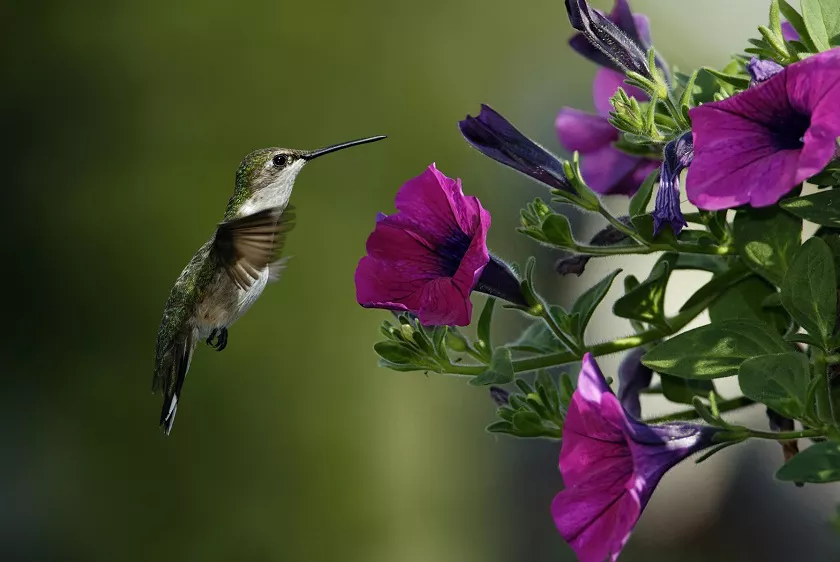Hummingbirds are fascinating creatures known for their vibrant colors, swift flight, and love for nectar-rich flowers. As a gardener or bird enthusiast, you might be wondering if impatiens, a popular flowering plant, can attract these delightful birds to your garden. In this article, we will explore whether hummingbirds like impatiens and provide useful tips on creating an inviting habitat for these winged visitors.
Understanding Hummingbird Feeding Preferences:
Hummingbirds have a strong affinity for nectar-producing plants, which supply them with the energy they need for their rapid wing movements. Their primary food source is flower nectar, but they also consume small insects for essential proteins. To attract hummingbirds, it’s crucial to select plants that offer ample nectar and are visually appealing to these tiny birds.
Impatiens: A Popular Choice for Hummingbird Gardens:
Impatiens, commonly known as “busy Lizzies,” are widely loved for their profusion of colorful blooms and ease of cultivation. While they are not typically considered as top-tier hummingbird favorites, impatiens do produce nectar that can attract these birds, especially when other preferred nectar sources are scarce. Adding impatiens to your garden can complement existing hummingbird-friendly plants and provide additional food sources for these remarkable creatures.
Optimal Growing Conditions for Impatiens:
To maximize the appeal of impatiens to hummingbirds, it is crucial to create an environment that favors their growth and blooming. Here are some key factors to consider:
a. Sunlight: Impatiens thrive in partial shade or filtered sunlight, making them an ideal choice for areas with dappled light or morning sun exposure.
b. Soil and Watering: Well-draining soil that retains moisture is essential for healthy impatiens growth. Regular watering to keep the soil consistently moist, without becoming waterlogged, is vital.
c. Fertilization: Using a balanced, slow-release fertilizer specifically formulated for flowering plants can help promote vigorous growth and abundant blooms in impatiens.
Complementing Impatiens with Hummingbird Favorites:
While impatiens can attract hummingbirds, it’s beneficial to create a diverse garden with a range of nectar-rich plants. By incorporating these hummingbird favorites alongside impatiens, you can enhance the overall appeal and ensure a reliable food source for these tiny birds. Consider the following popular choices:
a. Salvia: With its vibrant tubular flowers, salvia is a magnet for hummingbirds. Varieties like Salvia splendens and Salvia coccinea are particularly attractive to these birds.
b. Bee Balm: Monarda, commonly known as bee balm, produces stunning flowers in shades of red, pink, and purple. Its tubular blooms provide abundant nectar and are highly attractive to hummingbirds.
c. Cardinal Flower: Lobelia cardinalis, or cardinal flower, is renowned for its intense red flowers that are perfectly suited to hummingbird feeding with their long tubular shape.
Creating a Hummingbird Haven:
To transform your garden into a hummingbird haven, consider the following tips:
a. Provide Water Sources: Hummingbirds need water for drinking and bathing. Offer shallow birdbaths or install misters to create a refreshing environment.
b. Hang Hummingbird Feeders: Supplementing natural nectar sources with hummingbird feeders can ensure a consistent food supply throughout the year. Prepare a simple sugar-water solution (1:4 ratio) and keep the feeders clean and filled regularly.
c. Reduce Pesticide Usage: Minimize the use of pesticides in your garden, as they can be harmful to hummingbirds and their food sources. Opt for organic pest control methods to maintain a healthy and safe environment.
Conclusion:
While impatiens may not be the top choice for hummingbirds, they can still attract these fascinating birds when other nectar sources are limited. By incorporating a variety of nectar-rich plants, such as impatiens alongside hummingbird favorites like salvia, bee balm, and cardinal flower, you can create an inviting habitat for these delicate creatures. Remember to provide water sources and consider adding hummingbird feeders to ensure a consistent food supply. With a little planning and care, you can transform your garden into a delightful sanctuary for hummingbirds to enjoy.


 Facebook
Facebook  Instagram
Instagram  Youtube
Youtube 